|
Seminars

Series: Topics in the Aesthetics of Music and Sound
University of Southern Denmark, Campusvej 55, 5230 Odense M, Denmark







 English: All of the seminars are conducted in English (unless, of course, all participants present during a given seminar happen to English: All of the seminars are conducted in English (unless, of course, all participants present during a given seminar happen to speak Danish). speak Danish).

 Skype: Throughout the semester, we will continue to experiment with long-distance audience participation via Skype. This has proven to be quite successful, with audience members participating from as many as four countries at a time! If you are interested in attending a Skype: Throughout the semester, we will continue to experiment with long-distance audience participation via Skype. This has proven to be quite successful, with audience members participating from as many as four countries at a time! If you are interested in attending a  seminar in this manner, please get in touch with Cynthia M. Grund a few days in advance at cmgrund@sdu.dk. seminar in this manner, please get in touch with Cynthia M. Grund a few days in advance at cmgrund@sdu.dk.
 Lunchtime Concerts: Please note that there will be a number of lunchtime concerts between 12 noon and 1 p.m. throughout the spring semester 2015. Please watch here for details. Lunchtime Concerts: Please note that there will be a number of lunchtime concerts between 12 noon and 1 p.m. throughout the spring semester 2015. Please watch here for details.

SEMINARS, SPRING 2015: March 5 - May 7, 2015
(For seminars and events held in January and February 2015, please scroll down this page.)

The spring 2015 installment of the seminar series Topics in the Aesthetics of Music and Sound is:

An A3-size poster that shows all presentations is available HERE as a pdf file.

Thursday, March 5, 2015, 3:15-5 p.m. in Meeting Room Comenius -
Find it here -http://vejviser.sdu.dk/opslag?lid=20
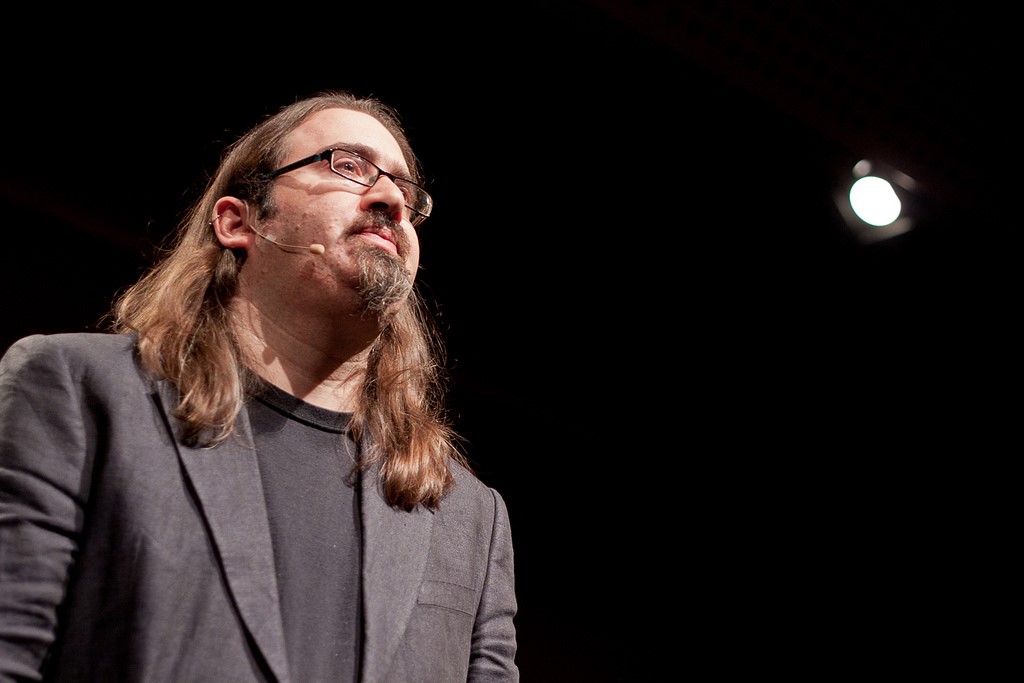
Exploring New Frontiers in the Aesthetics of Metal: Destabilising Capital through Mediocrity and Incompetence
Keith Kahn-Harris. Dr Keith Kahn-Harris is a lecturer at Birkbeck College and Leo Baeck College. A prolific writer on metal, he is the author of Extreme Metal: Music and Culture on the Edge (2007) and the co-editor of Heavy Metal: Controversies and Countercultures (2013). His website is www.kahn-harris.org.
Via Skype.
Abstract: An important theme in metal studies scholarship has been the examination and contestation of ‘capital’ within metal scenes and the hierarchies that derive from them. Gendered, heteronormative and race-based forms of capital in metal have been deconstructed by scholars rooted in metal scenes, forming part of a wider opening-up of metal to previously marginalised groups. While all this is to be welcomed, other forms of subcultural capital circulating in metal scenes have not been subject to the same degree of challenge. Competence, musical skill, innovation and knowledge - amongst other skills - are valorised in metal scenes in ways that create forms of subcultural capital ‘indigenous’ to them. As part of a wider project of rethinking metal aesthetics and metal scenes within the context of what I have termed a ‘crisis of abundance’, I have tried to imagine ways in which metal’s reliance on subcultural capital could be destabilised. In this lecture I will examine how a reconsideration of ‘incompetence’ and ‘mediocrity’ can open up new forms of metal pleasure as well as raising ironies, paradoxes and questions that help us rethink what metal might become in the future.
Poster available as pdf file HERE.
Facebook event page available HERE.
Audience participation via Skype is also welcome.

Thursday, March 12, 2015, 3:15-5 p.m. in Meeting Room Comenius -
Find it here - http://vejviser.sdu.dk/opslag?lid=20
 Classical Music and the Danish Media – Aesthetical Perceptions and Monetary Prioritizations Classical Music and the Danish Media – Aesthetical Perceptions and Monetary Prioritizations
Jens Jakob Kjær Hansen is a freelance concert pianist and is currently studying journalism at the University of Southern Denmark. During 2009-2012 he studied piano at the Royal Danish Academy of Music with Søren Rastogi, and during 2011-2012 he was also a student of Konrad Elser in Lübeck, Germany. He has won prizes in international competitions and has extensive experience with giving solo concerts, chamber music concerts and participation in festivals. He is also a composer.
Abstract: The plans to shut down the Danish State Radio Entertainment Orchestra caused a lot of debate in the Danish media. This presentation will investigate the characteristics of the debate in the media with special emphasis on discursive dualisms: How do the media frame different ideas about musical aesthetics and the role of music in society? Besides investigating and discussing this, the presentation will analyze and discuss the monetary aspects of classical music production under the Danish national public service channel, DR. How does DR prioritize its budgets, and, as a public service channel, how does it justify these budgets?
Poster available as pdf file HERE.
Facebook event page available HERE.
Audience participation via Skype is also welcome.

Thursday, March 19, 2015, 3:15-5 p.m. in Meeting Room Comenius -
Find it here -http://vejviser.sdu.dk/opslag?lid=20
 Metal B®ands and Visual Storytelling Metal B®ands and Visual Storytelling
Toni-Matti Karjalainen recently started in the position of Academy Reseach Fellow at Aalto University School of Economics; with research focus on the trade of cultural narratives within rock music industry, on the exports of Finnish heavy metal in particular. Prior to this, he worked as Research Director of the multidisciplinary IDBM Program of Aalto University. In addition to heavy metal, Toni-Matti has conducted and managed a number of research projects ranging from design management to visual brand communication in different industries. He holds the degrees of Doctor of Arts (Art and Design) and M.SC. (Economics), has published over one hundred articles in academic and popular domains, and lectured in universities, schools and companies in various countries. His recent book, The Playing Finn: Stories on Successful Game Development and Music Export (Talentum, Helsinki, 2014, co-edited with Miikka Lehtonen and Jani Niipola) presents Finnish export ventures in game, music and other creative fields. Toni-Matti is also the host of the international academic research conference, Modern Heavy Metal: Markets, Practices and Cultures, taking place in Helsinki in June 2015. He is a serious heavy metal and rock music enthusiast himself. More information: www.tonimattikarjalainen.info & www.modernheavymetal.net.
Via Skype.
Abstract: Can you think about the band TOOL without the rich visual worlds created by Adam Jones and Alex Grey? How big a role does the artwork of Derek Riggs play in your IRON MAIDEN experience? Does OPETH appear as a prog metal band also visually? Why is Ville Pirinen, visual artist and cartoonist, considered as the sixth member of the Finnish thrash group MOKOMA? The lecture will explore the visual appearance of certain metal bands, contextualized within a commercial framework of strategic brand communication. It will be discussed how the bands, like any other commercial brands, intentionally shape and express their communicative intent through visual artifacts like album artwork and stage design? We will see how visual identities are grounded, for example, on personal artistic aspirations, thoughts on commercial differentiation, metal genre (and sub-genre) categorizations, as well as cultural heritage and national branding imperatives? Along with the musical and lyrical connotations, visual features clearly function as means of “strategic” communication by directing the fan response towards desired interpretations.
Poster available as pdf file HERE.
Facebook event page available HERE.
Audience participation via Skype is also welcome.

Thursday, March 26, 2015, 3:15-5 p.m. in Meeting Room Comenius -
Find it here - http://vejviser.sdu.dk/opslag?lid=20
 All hail Pilse-Bob! The Re-presentation of Metal in Nordic Comic Strips All hail Pilse-Bob! The Re-presentation of Metal in Nordic Comic Strips
Rikke Platz Cortsen, PhD, is currently working on a postdoc project funded by the Danish Independent Research Council (FKK) about space and place in contemporary Nordic comics at the Department of Arts and Cultural Studies, University of Copenhagen, Denmark. Her PhD thesis is titled “Comics as Assemblage – How Time and Space is Constructed in Comics”. She has published several articles on various aspects of comics scholarship and has presented a number of papers at international conferences. She is a founding member of Nordic Network for Comics Research (NNCORE).
Abstract: Comics and metal are often considered by the general public and media as countercultural or belonging to a sub-cultural domain, often associated with youth culture. As such they share reputations within the cultural spheres and have also been at the center of each their own moral panics, both historically and in recent years.
When looking at the way metal cultures are portrayed in comics, however, the diversity within metal and the differences between format and genres in the comics medium plays a role in how metal is constructed as a whole.
My analysis of Norwegian strips features characters who are part of a metal culture - whether that be as members of a band, through their listening to metal music or through fashion statements.
I will focus on how the medium-specific aspects of comic such as color, layout, line, style, storytelling and text/image relations play important roles in the way metal is conveyed to the reader.Through the analysis of Torbjørn Lien’s spin-off series from Kollektivet, named Blacktööth like the black metal band it features, this presentation will depart from Stuart Hall’s concept of cultural representation and develop it further wih Bruno Latour’s thoughts on re-presentation to examine how metal is represented and re-presented in these strips.
The strip is then compared to the Finnish comic Perkeros by J.P. Ahonen and K.P. Alare, a full-length comic book that mixes metal music with fantastic elements in order to show another way in which metal can be re-presented in Nordic comics.
Just as there is not one metal culture, comics as a medium is diversified and my study shows that aspects such as format, genre and expression plays a role in what function metal has in Nordic comics today.
Poster available as pdf file HERE.
Facebook event page available HERE.
Audience participation via Skype is also welcome.

Thursday, April 9, 2015, 3:15-5 p.m. in Meeting Room Comenius - Find it here - http://vejviser.sdu.dk/opslag?lid=20

Shostakovich and Irony (and Me)
Roy Sellars has been Associate Professor of English at SDU since 1999, is currently on leave and is working mainly at the University of St. Gallen (HSG), Switzerland. His research is primarily in the field of literature and philosophy. Roy Sellars is an amateur musician and has been drawing on music in his teaching for many years, but has only recently attempted to write about it. This will be his first presentation for the research group.
Abstract: In this talk I address the question of irony mainly in the non-vocal music of Dmitri Shostakovich. I am interested in the connection between cognitive dissonance and musical dissonance, and I argue indeed that music is already a kind of cognition. Examples for analysis will include the 4th symphony and the 15th string quartet.
Poster available as pdf file HERE.
Facebook event page available HERE.
Audience participation via Skype is also welcome.

Thursday, April 16, 2015, 3:15-5 p.m. in Meeting Room Comenius -
Find it here - http://vejviser.sdu.dk/opslag?lid=20

Handmade Hardcore: Towards an Aesthetics of Fuck Up
Tore Tvarnø Lind, Associate Professor, PhD, Department of Arts and Cultural Studies, Section for Musicology, University of Copenhagen. Working primarily as a musical anthropologist, Tore has extensive fieldwork experience (Greece and Denmark). He has been working on Greek Orthodox chant, heterodox healing musics, the Pussy Riot case, and currently on music and torture, and he is the author of The Past Is Always Present: The Revival of the Byzantine Musical Tradition at Mount Athos (The Scarecrow Press, 2012) and “Blasphemy Cries over Pussy Riot” (to be published shortly in Danish Musicology Online, a special issue on music and censorship). The extreme metal scenes in Denmark and Greece are a part of a new research area involving issues of authenticity, politics, analog sound ideals, hidden lyrics, and vocal styles, as well as skulls on T-shirts.
Abstract: Hardcore bands – at least those I have been talking to from the Danish hardcore scene – show concern for sounding authentic. For example, The Kandidate (band from Aarhus, Denmark) describes this sound with the use of the word “harsh.” On their album from 2012, Facing the Imminent Prospect of Death, they want to sound like a band with an important message communicated in a style that authenticates their sincerity – their own understanding of “harsh.” In my presentation, I will discuss how The Kandidate tries to accomplish this ideal. The band has been using live and analog recording, hand drawn cover art, semi-hidden lyrics, and a straightforward production style. And these aspects are even emphasized on release material and on the website of front man and producer, Jacob Bredahl, who explains: “I like live recordings in the studio with full band […] Beat Detective and Auto Tune. I hate it […] And I am no fan of copy/paste music either.” While I address the meaning of digital music production when used as an analog tape recorder, I also want to discuss the importance of having the cover art and fragments of the lyrics hand drawn by a tattooist. Finally, suggesting a specific hardcore aesthetics of the human fuck up, I will attempt to figure out why the band recorded the song “All Fucked Up” in one day and mixed it in one hour only, ultimately (and this seems to be just as important) to emphasize this as a production and performance ethos.
Poster available as pdf file HERE.
Facebook event page will be available HERE.
Audience participation via Skype is also welcome.

Thursday, April 23, 2015, 3:15-5 p.m. in Meeting Room Comenius -
Find it here - http://vejviser.sdu.dk/opslag?
 Mother North: The Construction of Cultural Identity in Norwegian Metal Music Mother North: The Construction of Cultural Identity in Norwegian Metal Music
Imke von Helden, M.A Department of Scandinavian Studies at the University of Freiburg, Germany. Research assistant in the research group History in Popular Cultures of Knowledge. PhD student - Mother North: The Construction of Cultural Identity in Norwegian Metal Music. Member of the editorial board of Metal Music Studies. Founding member of the International Society for Metal Music Studies. Past: member of steering group for Music, Metal and Politics. Publications on Norwegian Metal and cultural identity, society and politics; EU politics in Norway.
Via Skype.
Abstract: The metal music scene as a glocal cultural phenomenon offers a way of dealing with globalisation and of finding, defining and reassuring oneself of one’s own cultural identity within the frame of an imagined global community. This particularly applies to Norse band concepts in Scandinavian countries. However, apart from tourism and children’s books, these topics no longer occur to most people in Norwegian society. This, along with the presentation of metal aesthetics might be the cause for scepticism towards Norse-themed metal music not only in Scandinavia: in Germany, these topics are often associated with right-wing extremism and racism due to extensive use of mythology and runes and the ideal of a strong, blonde-haired, blue-eyed warrior in Nazi-Germany. The killings committed by Breivik in 2011 also showed that there is still awareness for this topic in Norwegian society.
It is the aim of this presentation to delve into the Norwegian Viking metal genre and to identify the meaning and various functions attached to these topics in- and outside the scene. I will do so by looking at selected examples of band concepts in terms of the visual, lyrical as well as sonic levels and add information on the artists’ motivations that I gathered in interviews with Norwegian musicians and during field research. Additionally, I will provide a survey of the various literary and archaeological sources used in (re-)constructing the Viking Age in metal music.
Poster available as pdf file HERE.
Facebook event page available HERE.
Audience participation via Skype is also welcome.

Thursday, April 30, 2015, 3:15-5 p.m. in Meeting Room Comenius -
Find it here - http://vejviser.sdu.dk/opslag?lid=20
 Preliminary Insights from a Qualitative Study of Digital Music Formats at the Intersection of Downloading and Streaming-based Music Use. Preliminary Insights from a Qualitative Study of Digital Music Formats at the Intersection of Downloading and Streaming-based Music Use.
Andreas Lenander Ægidius, Ph.D.-student (2nd year), Institute for the Study of Culture – Media Studies, University of Southern Denmark
Abstract: I would like to share some preliminary insights from my on-going qualitative study of the everyday uses of immaterial music formats, specifically compressed audio files and audio streams. Therefore I will attempt to answer my overall research question: How do young Danish users, professional creators and distributors of music use immaterial music formats at the intersection of downloading and streaming?
Answers to my research question are based on semi-structured interviews with 30 respondents with regard to three core concerns:
1.Technical understanding of the format – from platform (pc, smartphone etc.) through software (iTunes, Spotify etc.) on to digital files (mp3, flac etc.)
• E.g. what do the three groups of users use and why?
2. Perceived sound quality of the user interface
• E.g. what meaning does sound quality have for the three groups’ uses of music files and streaming?
3. The potentials of music formats (affordances and multimodality) in everyday use
• E.g. how does music files and streaming function for the three groups?
The project aims to offer a sociocultural and qualitative contribution to the burgeoning understanding of the influence of ubiquitous mobile units and digital music formats on music use. My approach is motivated by the high penetration of downloading and streaming behaviours among Danish media users and the scarcity of sound empirical evidence of what this entails in an empirical as well as a theoretical sense.
Poster available as pdf file HERE.
Facebook event page available HERE.
Audience participation via Skype is also welcome.

Thursday, May 7, 2015, 3:15-5 p.m. in Meeting Room Comenius -
Find it here - http://vejviser.sdu.dk/opslag?lid=20
 Coherence and Dissonance: How Music Can Stem from a Formal Model Coherence and Dissonance: How Music Can Stem from a Formal Model
Giacomo di Tollo was born in Italy in 1981. He has obtained a Master in Piano Performance in 2001 (Conservatory of Pescara, Pescara, Italy) and a PhD Europaeus in Experimental Algorithmics / Optimisation in 2009 (Università “G. D’Annunzio, Pescara, Italy). He is engaged in the double activity of piano performer and scholar. In the latter activity, he has been working at: Università “G.D’Annunzio” (Pescara,I). University of Angers (Angers, F), University of Littoral-Cote d’Opale (Calais, F), Ecole Centrale de Lille (Villeneuve d’Ascq, F), Ca’ Foscari University (Venice, I). He has furthermore obtained grants to spend research periods is Switzerland, United Kingdom, Belgium, Denmark, Norway, Poland, Tunisia, Estonia. In addition, he has previously been granted a two-month CIRIUS scholarship to visit SDU (Computer Science Department) in 2010, and he has regularly visited SDU ever since in order to carry on research within various departments at SDU (Computer Science, Technology and Innovation) and to perform and give seminars in the SDU Lunchtime Concert series and the IKV-SDU seminar series Topics in the Aesthetics of Music and Sound. His published research activity is related to the definition and application of genetic algorithms to different scenarios, to portfolio selection and to credit risk, and he will be extending these techniques to the analysis of dissonance in metal music.
Abstract: The concept of dissonance is one of the fundamental elements in both music theory and music aesthetics. As often is the case for elements which play such fundamental roles in a theoretical sense, it is difficult to define them in a satisfactory way.
We notice nevertheless that many possible definitions stress a “negative” element in the concept of dissonance, altough implementations of various characterizations of dissonance may lead to results that are significantly different when compared with each other. This is precisely what happened in the history of western music, in which there has been a progression towards an acceptance of greater and greater levels of dissonance, leading to changing definitions of what is “dissonant” over time. Hence, the concept of dissonance is closely related to the mechanism of perception: the degree to which a certain musical element is perceived as dissonant varies depending on the subjective perception of individuals.
In the seminar we want to investigate whether it is possible to organize the musical material so that the “negative" or "unacceptable" aspects of dissonances (if any, given the listeners' background) fall apart: this is a key question the answer to which requires sound experimental analysis over a wide spectrum of repertoire and listeners. As a step in this direction, I am therefore proposing a notion of musical "coherence" and the investigation of musical frameworks that are considered “coherent”, regardless of the musical material under consideration. I hypothesize that this notion of musical coherence is interestingly related to relationships between sonic material and algorithmic sound generation that advanced infomation technology can reveal. Preliminary results suggest that this approach can provide insights into why at least some genres of metal music are experienced as aesthetically satisfying by listeners with the requisite listening competencies.
Poster available as pdf file HERE.
Facebook event page available HERE.
Audience participation via Skype is also welcome.

PREVIOUS SEMINARS, SPRING 2015
We kickstarted the semester on Thursday, January 15, 2015!

Logo designed by Christophe Szpajdel
The exhibition Marks of Metal opened at Brandts - Mediemuseet (link HERE) in Odense on January 15, 2015. Facebook event page HERE. The exhibition features work by internationally renowned logo artist Christophe Szpajdel, and is under the direction of Vitus Vestergaard. This is part of Vitus' ongoing research project in our program The Performances of Everday Living entitled Investigation of Metal Music and Visuals: Logo, Cover, Brand; for background, see HERE.
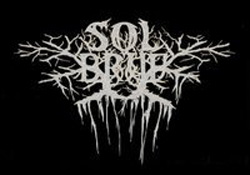
A noteworthy feature of the exhibition opening on January 15 was that Copenhagen-based black metal band Solbrud (see HERE) performed during the evening of the opening day from 7 p.m to 9 p.m. (please see HERE for more information about the concert).

Thursday, February 5, 2015, 3:15-5 p.m. in Meeting Room Comenius -
Find it here - http://vejviser.sdu.dk/opslag?lid=20

The Taste of Metal
Theodore Gracyk, Professor of Philosophy, Minnesota State University Moorhead. Co-Editor, Journal of Aesthetics and Art Criticism. Author of Rhythm and Noise: An Aesthetics of Rock (Duke 1996) and On Music (Routledge, 2013). Co-editor of The Routledge Companion to Philosophy and Music (2011). Current research projects include papers on the nature of virtual performance and on the role of rhythm in musical expressiveness, and a planned book on the nature of musical taste. http://web.mnstate.edu/gracyk/
Via Skype.
Abstract: As a philosopher of music, I am intrigued by the concept of musical taste – also as it applies to metal music, much of which I happen to appreciate and actually enjoy. It is indisputable, however, that regarded as a broad musical genre, metal consistently ranks as among the very few types of music that most people, well, hate. A taste for metal is frequently treated as inexplicable. From a sociological perspective, these facts have been explained as a response to the music that arises from a judgment about its (perceived) audience. However, it is equally likely that metal fans endorse the music because they desire social distinction. It is also significant that metal fans recognize distinctions within metal, and these operate to signal taste alignments that function much like the social process that holds more generally between metal fans and non-metal fans. As such, it appears that metal fans (as opposed to casual listeners) are required to develop specific, distinctive, and highly refined musical tastes. The goal of this talk is to distinguish between distinctive tastes and aberrant taste, supporting the position that a taste for metal is not inexplicable as a development of musical taste.
Poster available as pdf file HERE.
Facebook event available HERE.
Audience participation via Skype is also welcome.

Thursday, February 12, 2015, 3:15-5 p.m. in Meeting Room Comenius -
Find it here -http://vejviser.sdu.dk/opslag?lid=20
 What is Black Metal Theory? Les Légions Noires: Labor, Language, Laughter What is Black Metal Theory? Les Légions Noires: Labor, Language, Laughter
Edia Connole is co-author with Nicola Masciandaro of Floating Tomb: Black Metal Theory (Mimesis, 2015), and co-editor with Gary J. Shipley of Serial Killing: A Philosophical Anthology (Schism, 2015). Current projects include ‘The Missing Subject of Accelerationism: Heavy Metal’s Wyrd Realism,’ in Occult Accelerationism, eds. Ed Keller, Ben Noys and Tim Matts (Punctum, 2015), and ‘Exhuming Animality,’ in Exploring The Accursed Share Project: Essays On And With Bataille, ed. Will Stronge (Bloomsbury, 2015). Recent projects include True Detection (Schism, 2014), co-edited with Paul J. Ennis and Nicola Masciandaro, and ‘“os mentis [mouth to mouth]” with Nicola Masciandaro,’ co-authored with Scott Wilson, in Weaponising Speculation, ed. Caoimhe Doyle (Punctum, 2014). With Scott Wilson, Edia Connole is also the co-founder of MOUTH, an actionist art project in culinary divinomics. mmmouth.wordpress.com
Via Skype.
Abstract: This seminar will answer the question ‘What is Black Metal Theory?’ by addressing the formation, recordings and inscrutable legacy of Les Légions Noires (LLN) through Nicola Masciandaro’s ‘Labor, Language, Laughter’ (Sufficient Unto The Day, 2014). Drawing on Mikhail Bakhtin’s reflections on language in Rabelais and His World (1965), LLN’s carnivalization of speech will be posited as a form of verbal absurdity that succeeds in achieving what Masciandaro terms a ‘laughing laboring logos’ that ‘traces the tragedy of not not knowing’ through a medieval poetics that is characteristic in form to black metal theory, construed herein as ‘the working together of texts; the working together of these powers within individual beings; and the working together of persons,’ to distill, a monstrous hermeneutics that apophatically keeps open the question of human cognition (2014, 120; 118).
Recommended Reading: ‘Dominik Irtenkauf Interviews Edia Connole on Black Metal Theory,’ forthcoming in German Legacy (Dec 2014), available in English from Queen Mob’s Tea House HERE.
Poster available as pdf file HERE.
Facebook event page available HERE.
Experience the seminar on our  Channel. Channel.
Audience participation via Skype is also welcome.

Thursday, February 19, 2015, 3:15-5 p.m. in Meeting Room Comenius -
Find it here - http://vejviser.sdu.dk/opslag?lid=20
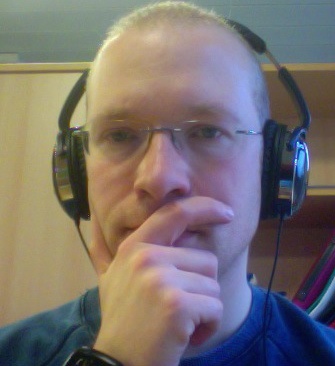 What Is Progressive about Progressive Metal? What Is Progressive about Progressive Metal?
Søren R. Frimodt-Møller is Assistant Professor in Media Technology at Aalborg University Esbjerg. He holds a PhD in philosophy as well as an MA in philosophy and visual communication, both from University of Southern Denmark. His research deals with a variety of cross-disciplinary topics such as the role of norms in the coordination processes of performing musicians, the role of digital media in professional creative collaborations, and the interplay between sound and visuals in music experience. Søren is also one of the Managing Editors of JMM: The Journal of Music and Meaning. More information on Søren’s recent activities and publications can be found at his website, www.orkesterfilosofi.dk
Abstract: There is a seeming self-contradiction in having a musical genre, whose traits are described as progressive: Invariably, any trait that is repeated enough times to become a genre trait, stops being progressive in the original sense of the word. Some theorists of progressive rock and metal (nowadays often simply labeled prog) hold that “progressive” does not refer to the music being innovative, but is rather a description of the typically epic or rhapsodic structure of the music – the music, so to speak, progresses frequently from one theme to another. A different explanation for the term could be the reverence of most prog artists towards the progressive rock bands of the 1970s and early 1980s. This, however, would merely raise the question of what made those bands worthy of the term “progressive”. Studying how the modern understanding of the prog genre has emerged, and what it entails, provides us with an interesting case of how the concept of a musical genre is constructed, and also points towards a discussion of how the broader concept of metal has been shaped throughout five decades. The advent of new genre terms such as post-metal and even post-progressive, also showcases how artists strive to rise above their own genre and play with its conventions – an interesting parallel to the development of meta-disciplines within philosophy.
Poster available as pdf file HERE.
Facebook event page available HERE.
Audience participation via Skype is also welcome.

Thursday, February 26, 2015, 3:15-5 p.m. in Room 94 in SDU's Conference Section -
Find it here - http://vejviser.sdu.dk/opslag?lid=2705
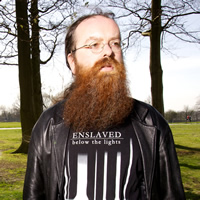
Too Old to Raise the Horns? Getting Older on the Metal Scene and the Politics of Intentionality: A Case Study of Second Generation Norwegian Black Metal Bands
Karl Spracklen is a Professor of Leisure Studies at Leeds Beckett University, UK. He is the Editor of Metal Music Studies and the Secretary of the International Society for Metal Music Studies. He has extensive research interests around leisure spaces and leisure identities, and has contributed to debates around leisure theory. He has over seventy publications, including three research monographs, the most recent of which is Whiteness and Leisure (2013), published by Palgrave Macmillan.
Via Skype.
Abstract: In the sociology of leisure, popular music can be identified as a site of intentionality, where identity is performed and negotiated in the social and cultural spheres. This intentionality is visible in the discourses surrounding authenticity and belonging in extreme metal. Scholars in the sociology of leisure and the sociology of popular music recognise the challenge to such intentionality by the biological fact of age. In this seminar, I will explore how key bands of the second generation of black metal (the ‘Norwegian scene’) have maintained or repudiated their misanthropic, Satanic beliefs and their original, dissonant style. I will examine published interviews with representatives of Burzum, Darkthrone, Enslaved, Immortal, Mayhem and Ulver and argue that the challenge of ageing and the conservative nature of the extreme metal scene have limited the ways in which the identities of the members of these bands have evolved. For some bands, the ageing process has led them to question the Satanic ideologies and stylings of the 1990s. For others, their authentic kult credibility is dependent on them maintaining continuity with the intentionality of their youth. This seminar will use the discussion about ageing black metal bands to make wider contributions to the sociology and politics of leisure and ageing.
Poster available as pdf file HERE.
Facebook event page available HERE.
Audience participation via Skype is also welcome.

Please see the following networks for additional information about activities within The Aesthetics of Music and Sound:
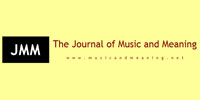
JMM: The Journal of Music and Meaning (Funded by the Danish Research Council for the Humanities.)
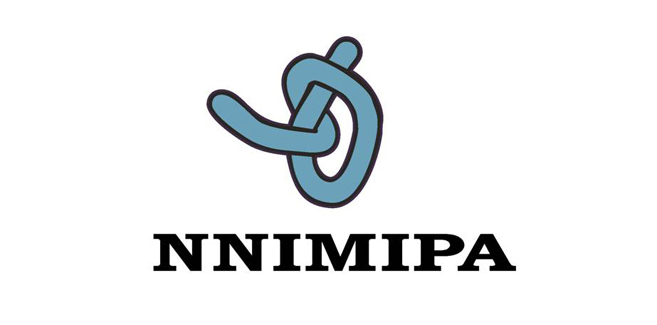
Nordic Network for the Integration of Music Informatics, Performance and Aesthetics (originally supported by NORDPLUS and subsequently NORDFORSK)

netværk for tværvidenskabelige studier af musik og betydning/
network for cross-disciplinary studies of music and meaning

|
|
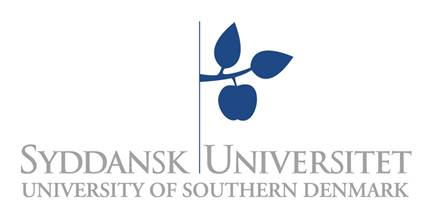

Department for the
Study of Culture
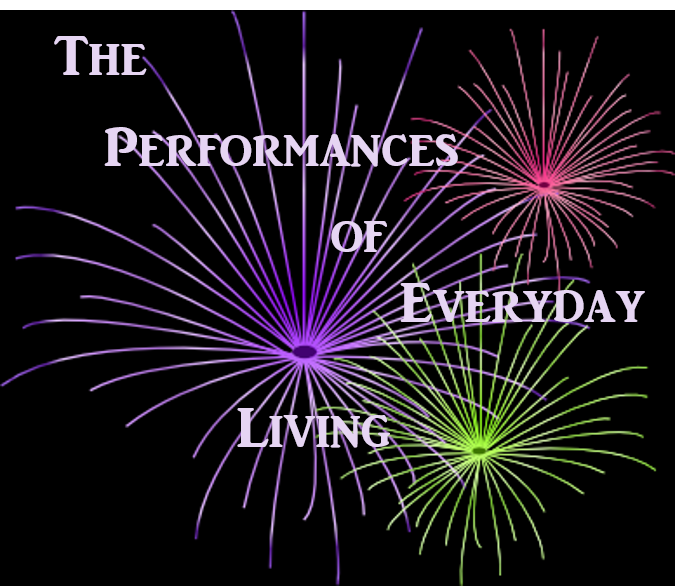
Research Director for
The Performances of
Everyday Living
Coordinator for
The Aesthetics of
Music and Sound
and
Editor and Webmaster for
www.soundmusicresearch.org:
Cynthia M. Grund
cmgrund@sdu.dk


Updates

PLEASE NOTE: During the month of March 2015 and possibly extending into April/May 2015, heavy construction will be taking place on this website behind the scenes as it "migrates" to new editing software. Please be patient with us during this period if occasionally some pages take on a strange appearance, or if updating seems to be a bit erratic. All efforts will be made to maintain the integrity of the page with the schedule for the seminar series Topics in the Aesthetics of Music and Sound: Mostly Metal here, but it will nevertheless be a good idea also to keep an eye on our Facebook group here and the regularly occurring announcements of events on it during this period. Thank you for your patience!
During March-May 2015 we will also continue to develop our new

channel, which we encourage you to visit here.
Archive
for ""Updates" and "News":
Click HERE.

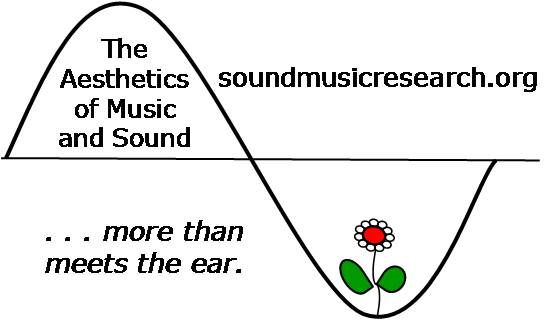
| |